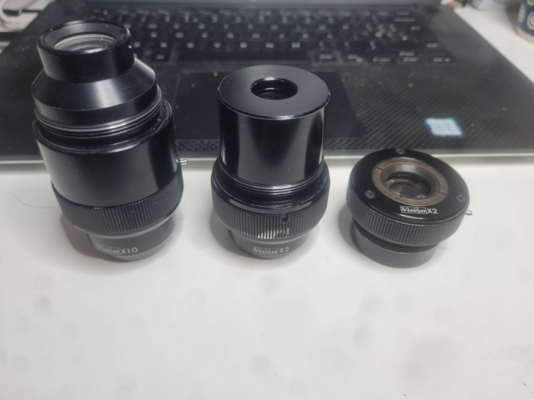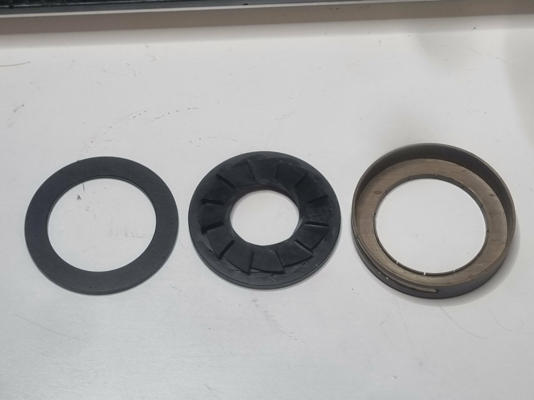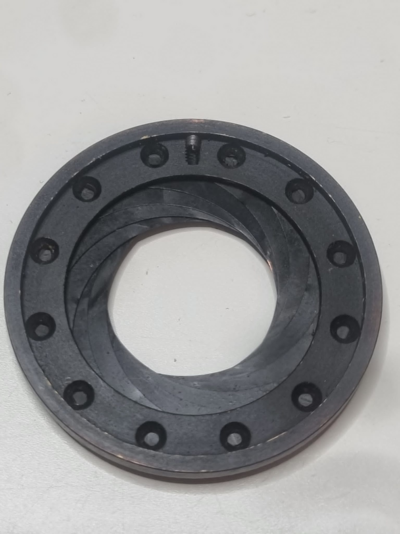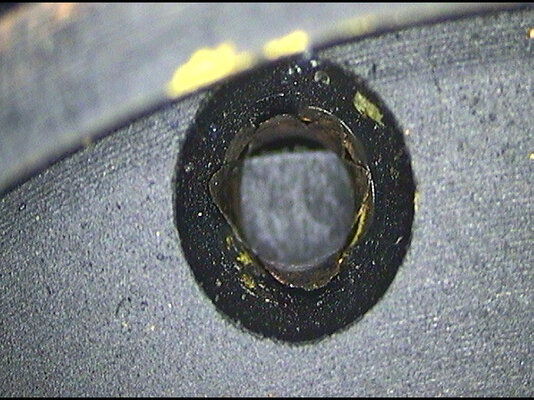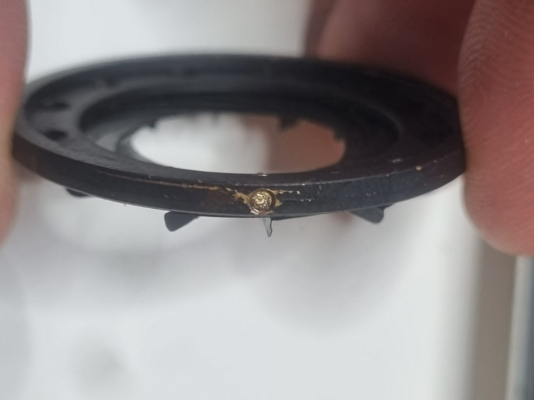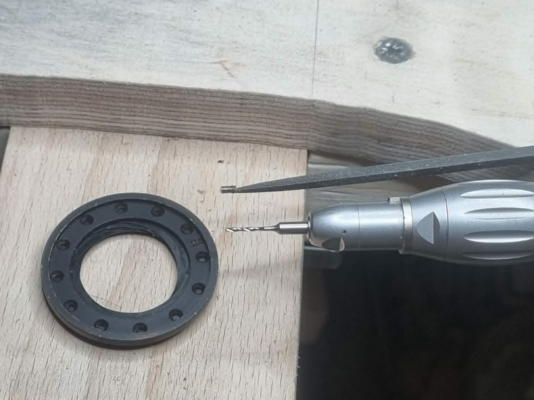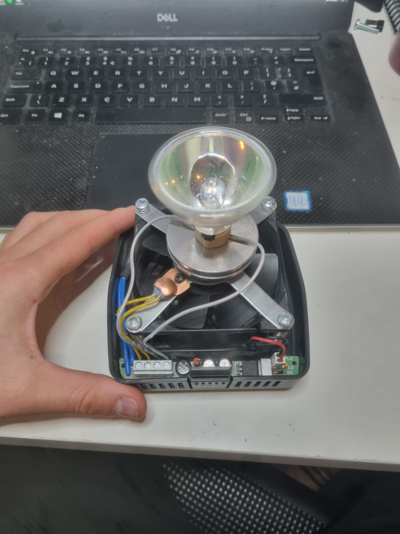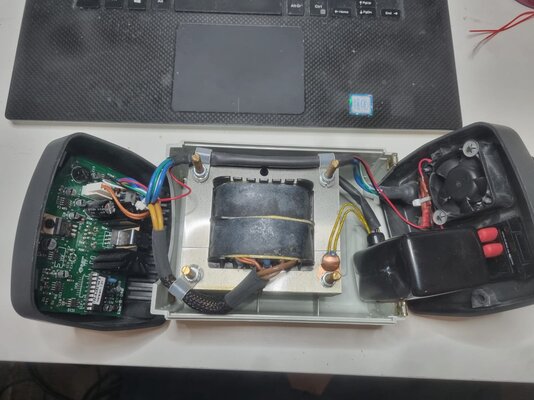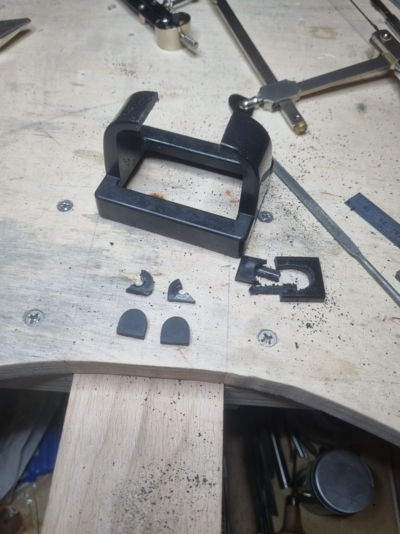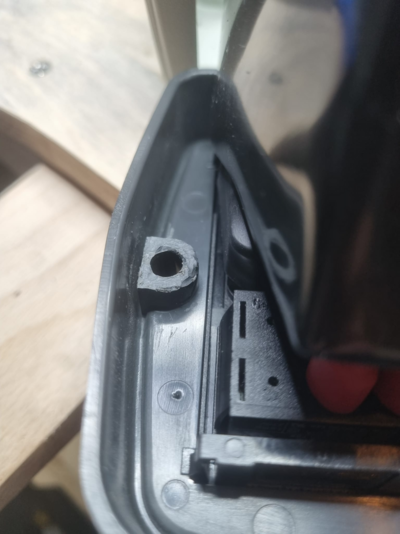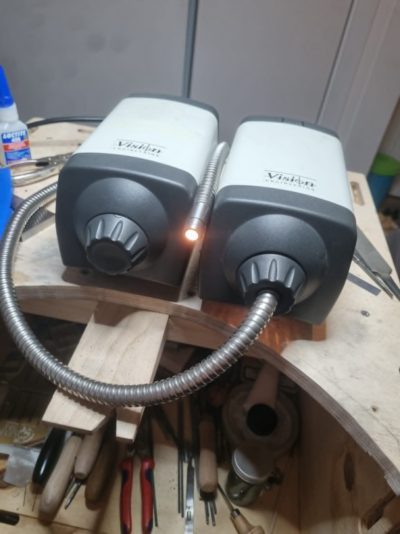Maker
Most folk just call me; Orange Joe
- Messages
- 10,672
- Location
- Keeler crater
Thought I'd post a thread on this as there's a lot of cool features to show off and a few repairs to carry out.

As I posted in Today I acquired last week, this is an "eyepieceless" microscope, the head contains a big bright circular image, which is very tolerant to eye position unlike a conventional eyepiece. The bulge below the head is a beamsplitter, re-directing some light to a 1/3" CCD camera, an S-Video to USB converter gets the image into a computer, but it's a rectangular image so quite heavily cropped in. The boxes on the table are a 100 watt variable power supply which powers a halogen, fibre coupled illuminator for the backlight, and two identical (Aside from one connector) power supplies which power a top light and a the microscope itself - One is for this one, the other is for the "Lynx" microscope I also got hold of.
The table has a 150x200mm travel and the head rises 240mm above the table, so the work envelope is pretty enormous (For reference, my Mitutoyo microscope has a table travel of 50x50mm). All axes move with concentric knobs, the outer barrel moves approx 32mm/rev, and the inner barrel moves about 0.5mm/rev, of course the first thing I had to do is get all the covers off and see how that worked.
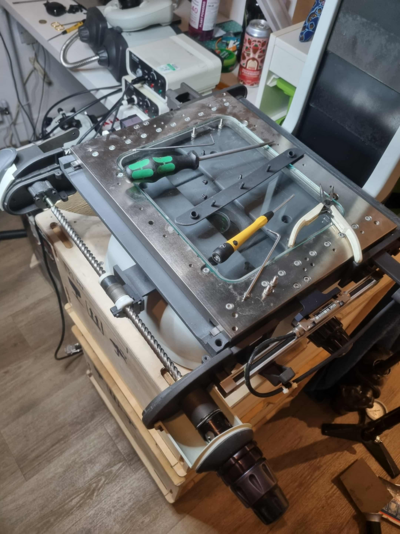
Both axes have a high helix, 6 start leadscrew for the coarse adjustment, and the fine adjust moves the leadscrew relative to it's mount. To the right, you can see an Acu-rite (Heidenhain) 0.5 micron glass scale. This would have been read by a PCI (Not PCi-e) card:
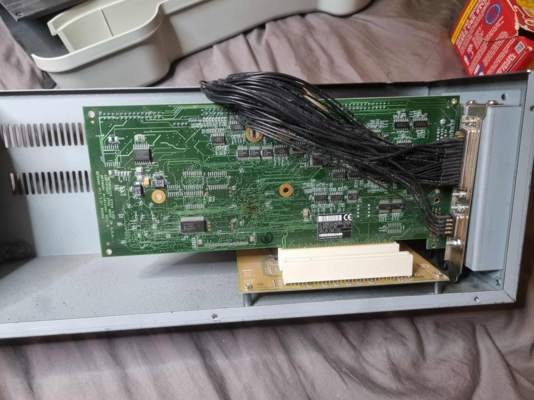
This is fitted to a PCI-e expander box, the box plugs into a PCI-e card (Which I don't have) in a PC (Over a DVI cable ). I'm told part of this system doesn't work which is ultimately why the thing was scrapped. No idea which bit doesn't work, and I won't be buying a thunderbolt to PCI adapter (Assuming they even exist) to test it on my laptop, given the software isn't free. I'd much rather a simple DRO anyway, which might be a nice electronics project for the winter months (Like I need another project!).
). I'm told part of this system doesn't work which is ultimately why the thing was scrapped. No idea which bit doesn't work, and I won't be buying a thunderbolt to PCI adapter (Assuming they even exist) to test it on my laptop, given the software isn't free. I'd much rather a simple DRO anyway, which might be a nice electronics project for the winter months (Like I need another project!).
Underneath, there's a fibre bundle and a 45 degree mirror to the backlight. The wheel on the left operates an iris to dim the backlight. The Z axis adjustment is a worm gear and a bevel gear onto what looks like a very coarse ball screw, the fine adjust here moves the worm along it's shaft without rotating, which gives a very fine movement at the head.
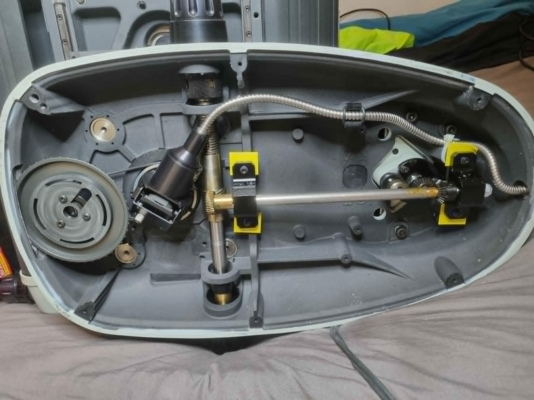
As I posted in Today I acquired last week, this is an "eyepieceless" microscope, the head contains a big bright circular image, which is very tolerant to eye position unlike a conventional eyepiece. The bulge below the head is a beamsplitter, re-directing some light to a 1/3" CCD camera, an S-Video to USB converter gets the image into a computer, but it's a rectangular image so quite heavily cropped in. The boxes on the table are a 100 watt variable power supply which powers a halogen, fibre coupled illuminator for the backlight, and two identical (Aside from one connector) power supplies which power a top light and a the microscope itself - One is for this one, the other is for the "Lynx" microscope I also got hold of.
The table has a 150x200mm travel and the head rises 240mm above the table, so the work envelope is pretty enormous (For reference, my Mitutoyo microscope has a table travel of 50x50mm). All axes move with concentric knobs, the outer barrel moves approx 32mm/rev, and the inner barrel moves about 0.5mm/rev, of course the first thing I had to do is get all the covers off and see how that worked.

Both axes have a high helix, 6 start leadscrew for the coarse adjustment, and the fine adjust moves the leadscrew relative to it's mount. To the right, you can see an Acu-rite (Heidenhain) 0.5 micron glass scale. This would have been read by a PCI (Not PCi-e) card:

This is fitted to a PCI-e expander box, the box plugs into a PCI-e card (Which I don't have) in a PC (Over a DVI cable
 ). I'm told part of this system doesn't work which is ultimately why the thing was scrapped. No idea which bit doesn't work, and I won't be buying a thunderbolt to PCI adapter (Assuming they even exist) to test it on my laptop, given the software isn't free. I'd much rather a simple DRO anyway, which might be a nice electronics project for the winter months (Like I need another project!).
). I'm told part of this system doesn't work which is ultimately why the thing was scrapped. No idea which bit doesn't work, and I won't be buying a thunderbolt to PCI adapter (Assuming they even exist) to test it on my laptop, given the software isn't free. I'd much rather a simple DRO anyway, which might be a nice electronics project for the winter months (Like I need another project!).Underneath, there's a fibre bundle and a 45 degree mirror to the backlight. The wheel on the left operates an iris to dim the backlight. The Z axis adjustment is a worm gear and a bevel gear onto what looks like a very coarse ball screw, the fine adjust here moves the worm along it's shaft without rotating, which gives a very fine movement at the head.

Last edited:




